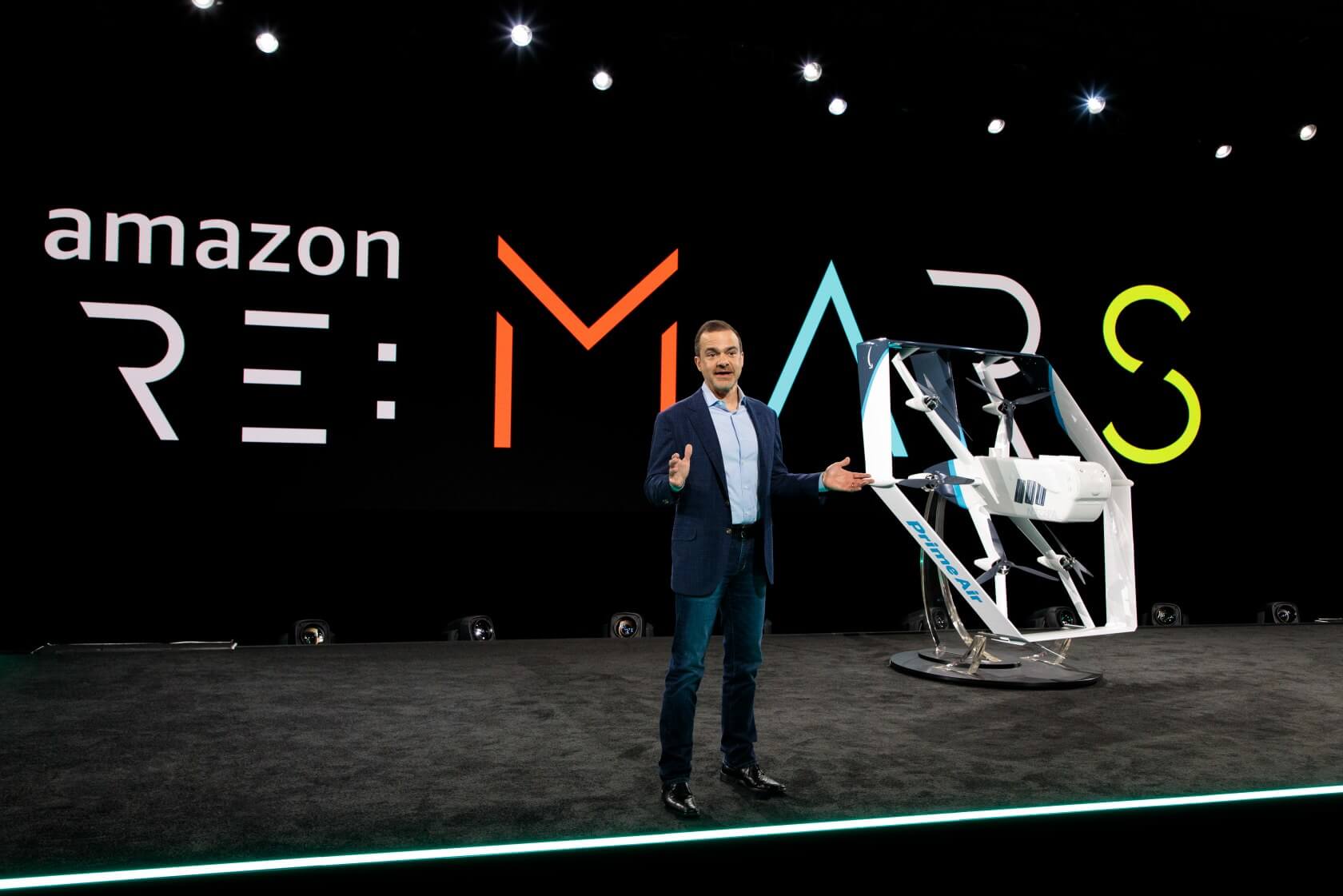Amazon has been testing out its delivery drone service known as "Prime Air" for quite some time now, but only in select areas – there's still no word on when they might be ready to spread across the United States or the world at large.
Before that can happen, Amazon likely wants to ensure its drones are perfect (or at least as close to perfect as they can reasonably get) by iterating on them over time and testing out different versions to see what sticks.
To that end, Amazon revealed the latest redesign of its Prime Air delivery drones at the re:MARS AI conference on Wednesday. See the new and improved drone in action below.
The main goals behind the Prime Air drone's new look and functionality are boosted efficiency, stability, and safety. Amazon has accomplished the former two tasks by implementing a "hybrid" flight mode into the new design. Now, the drones can take off and land vertically as a helicopter can, but once they fully take to the sky, they can switch to "airplane mode" for faster, more power-efficient travel.
As far as safety advancements go, those improvements come through jumps in Amazon's AI technology. The retail giant's Jeff Wilke explains the new AI safety features as follows:
If our drone's flight environment changes, or the drone's mission commands it to come into contact with an object that wasn't there previously---it will refuse to do so---it is independently safe... Our drones need to be able to identify static and moving objects coming from any direction. We employ diverse sensors and advanced algorithms, such as multi-view stereo vision, to detect static objects like a chimney. To detect moving objects, like a paraglider or helicopter, we use proprietary computer-vision and machine learning algorithms.
In other words, Amazon's new drones are much more capable of reacting to dynamic changes in their environment and, when necessary, ignoring previous commands in the name of safety.
This is particularly important when a drone approaches the ground to drop off a delivery – the average customer could have any number of obstructions in their front yard, including (but certainly not limited to) lawn chairs, animals, clotheslines, or vehicles. For Amazon's delivery drone fleet to become mainstream, it will need to intelligently avoid these obstacles with almost perfect consistency.
At any rate, we're looking forward to seeing what the future holds for Prime Air and drone-based delivery systems as a whole.
